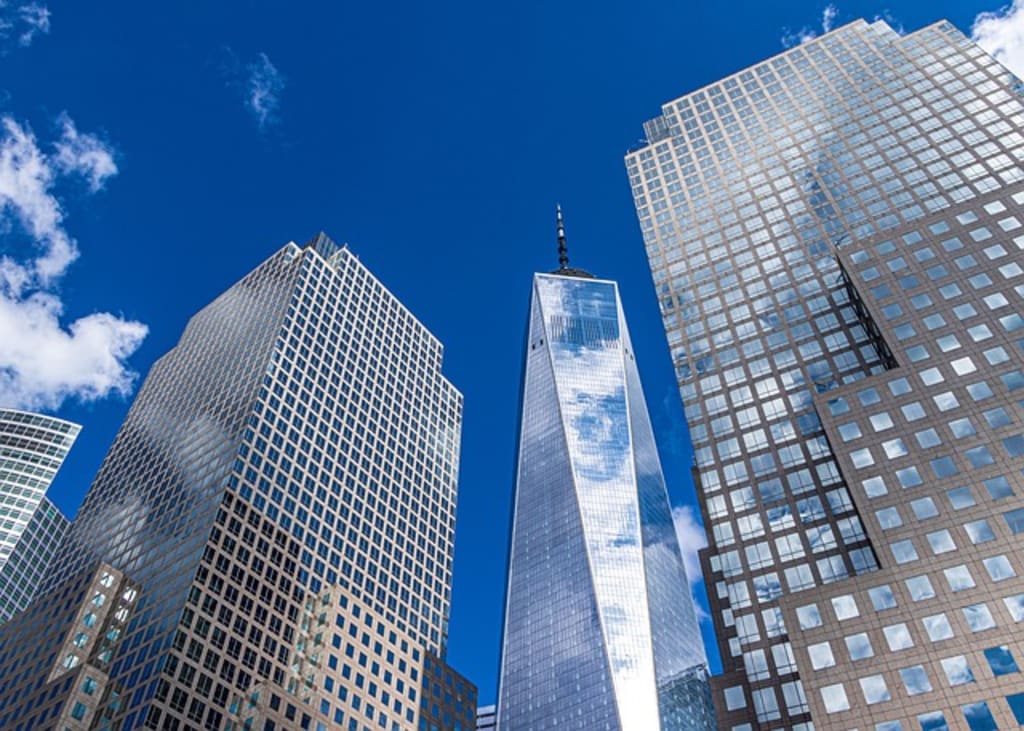
The Burj Khalifa is a towering skyscraper located in Dubai, United Arab Emirates, and is currently the tallest building in the world. Completed in 2010, the building stands at a height of 828 meters (2,716 feet) and features 163 floors. However, if we were to go back in time to 1950, the idea of constructing such a massive building would have seemed unimaginable. Let's take a closer look at what Dubai was like in the 1950s and how the Burj Khalifa came to be.
In the 1950s, Dubai was a small town located on the Arabian Peninsula. At that time, the town was mostly known for its pearl trade and fishing industry. The population of Dubai was only around 20,000 people, and the town was not yet a major tourist destination or business hub.
It wasn't until the 1960s and 1970s that Dubai began to experience significant growth and development. The discovery of oil in the region brought wealth and investment to the area, and the government of Dubai began to invest in infrastructure and development projects.
One of the earliest major development projects in Dubai was the construction of the Dubai World Trade Centre, which was completed in 1978. The building was the first high-rise in Dubai and was seen as a symbol of the city's growing ambition and prosperity.
In the 1980s and 1990s, Dubai continued to experience rapid growth and development. The city became a major tourist destination, with luxury hotels, shopping malls, and other attractions drawing visitors from around the world. The construction of the Dubai Marina and the Palm Jumeirah, two massive artificial islands off the coast of Dubai, were also major milestones in the city's development.
However, it wasn't until the early 2000s that the idea of constructing the Burj Khalifa began to take shape. The project was initiated by Sheikh Mohammed bin Rashid Al Maktoum, the ruler of Dubai, who was looking for a way to further elevate the city's status and draw attention to its growing economy and cultural significance.
The initial plans for the Burj Khalifa were drawn up in 2003, and construction began in 2004. The project was a massive undertaking, with thousands of workers involved in the construction process. The building's unique design, which features a tapered shape and a series of setbacks, was chosen to help it withstand the high winds that are common in the area.
The Burj Khalifa was officially opened in January 2010, and it quickly became a symbol of Dubai's ambition and achievement. The building features a variety of luxury amenities, including restaurants, hotels, and observation decks, and has become a major tourist attraction in the city.
Today, the Burj Khalifa stands as a testament to Dubai's vision and ambition. The building's massive size and unique design have made it one of the most recognizable landmarks in the world, and it continues to draw visitors and admirers from around the globe.
While it may be difficult to imagine Dubai in the 1950s, the city's growth and development over the past several decades have been nothing short of extraordinary. The Burj Khalifa stands as a symbol of this transformation, a testament to the vision and ambition that have made Dubai one of the most dynamic and exciting cities in the world.
The construction of the Burj Khalifa was not without its challenges, however. In addition to the high winds that made building at such heights difficult, there were also concerns about the safety of the building and the impact that it would have on the environment.
To address these concerns, the architects and engineers involved in the project had to utilize the latest in construction technology and techniques. The building's foundation, for example, is made up of a series of concrete piles that were driven deep into the ground to provide stability and support. The building's exterior is also covered in a high-tech, reflective glass that helps to reduce heat gain and improve energy efficiency.
Despite these efforts, there were still concerns about the environmental impact of the Burj Khalifa. In response, the building's designers and builders took a number of steps to minimize its impact on the surrounding ecosystem. For example, the building's cooling system uses a combination of high-tech air conditioning and a series of cooling towers that help to reduce the amount of water that is needed to keep the building cool.
Today, the Burj Khalifa is a shining example of what is possible when vision, ambition, and technology are combined. The building has helped to transform Dubai into a global business and tourism hub, and it stands as a testament to the city's determination to be a leader in the 21st century.
Beyond its impressive size and engineering feats, the Burj Khalifa is also home to a number of cultural and artistic attractions. The building's observation decks offer stunning views of the city and surrounding landscape, while its restaurants and cafes provide a taste of the world-class cuisine that Dubai has become known for.
Perhaps most impressive, however, is the building's role as a canvas for artistic expression. The Burj Khalifa has been used as a projection surface for a number of spectacular light shows, including a dazzling display of fireworks that marked the New Year's Eve celebrations in 2013. The building has also been used as a backdrop for a number of other artistic events, including fashion shows, film screenings, and music performances
In many ways, the Burj Khalifa represents the best of what Dubai has to offer. It is a symbol of the city's ambition, its dedication to innovation and technology, and its desire to be a global leader in business, culture, and the arts.
As Dubai continues to grow and develop, it is likely that the Burj Khalifa will remain a central focus of the city's identity and a major attraction for visitors from around the world. Whether you are interested in architecture, engineering, art, or simply breathtaking views, the Burj Khalifa is a must-see destination that is sure to leave a lasting impression
One of the most interesting things about the Burj Khalifa is the sheer amount of planning and technology that went into its construction. The building was designed by Adrian Smith, an American architect who worked for the Chicago-based firm Skidmore, Owings & Merrill. Smith's design called for a building that would be able to withstand the high winds and harsh weather conditions that are common in Dubai, while also providing a high level of comfort and energy efficiency for its occupants.
Overall, the Burj Khalifa is an impressive achievement of engineering, design, and innovation. It represents the best of human creativity and ingenuity, and has helped to push the boundaries of what is possible in the world of architecture and construction. Whether you are a fan of tall buildings, innovative design, or simply looking for an exciting new travel destination, the Burj Khalifa is definitely worth a visit.
About the Creator
Enjoyed the story? Support the Creator.
Subscribe for free to receive all their stories in your feed. You could also pledge your support or give them a one-off tip, letting them know you appreciate their work.






Comments
There are no comments for this story
Be the first to respond and start the conversation.